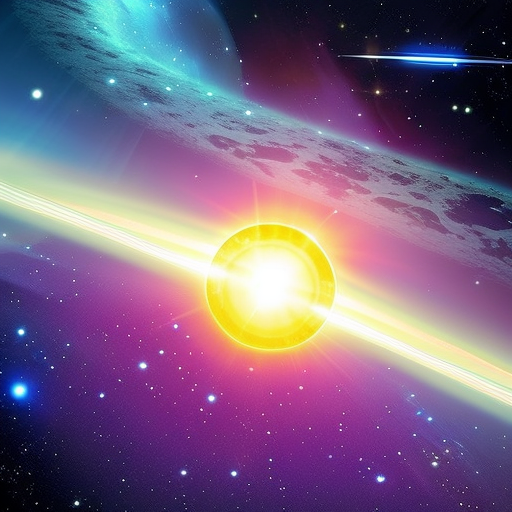Summary:
Gamma-ray bursts (GRBs) are intense bursts of gamma-ray radiation that occur in distant galaxies. They are some of the most energetic events in the universe, releasing more energy in a few seconds than the Sun will emit in its entire lifetime. GRBs can be classified into two types: long-duration bursts, which last for more than two seconds, and short-duration bursts, which last for less than two seconds. The exact cause of GRBs is still not fully understood, but they are thought to be associated with the collapse of massive stars or the merger of compact objects such as neutron stars or black holes. GRBs are detected by satellites and ground-based telescopes, and studying them can provide valuable insights into the early universe, the formation of black holes, and the physics of extreme astrophysical phenomena.
Long-duration Gamma-ray Bursts:
Long-duration GRBs are believed to be associated with the collapse of massive stars. When a massive star runs out of fuel, its core collapses under its own gravity, leading to the formation of a black hole or a rapidly rotating neutron star. As matter falls into the black hole or is ejected by the neutron star, powerful jets of energy are produced. These jets emit radiation across the electromagnetic spectrum, with the highest energy gamma rays being the most prominent. The exact mechanism that produces these jets is still a topic of active research.
Short-duration Gamma-ray Bursts:
Short-duration GRBs, on the other hand, are thought to be caused by the merger of compact objects such as neutron stars or black holes. When two of these objects spiral towards each other, they release a tremendous amount of gravitational energy. This energy is converted into a burst of gamma rays as the objects merge. Short-duration GRBs are typically less energetic than their long-duration counterparts, but they can still release a significant amount of energy.
Observing Gamma-ray Bursts:
GRBs are detected by satellites such as NASA’s Fermi Gamma-ray Space Telescope and the European Space Agency’s INTEGRAL. These satellites are equipped with instruments that can detect gamma rays and provide information about the duration, intensity, and spectral properties of the bursts. Ground-based telescopes also play a crucial role in observing GRBs, as they can detect the afterglow of the bursts in other wavelengths, such as X-rays, visible light, and radio waves. By studying the afterglow, astronomers can gather information about the distance, energy, and composition of the burst.
Scientific Significance:
Studying GRBs is of great scientific significance as they provide valuable insights into the early universe and the formation of black holes. The detection of GRBs at high redshifts suggests that they were more common in the early universe, providing clues about the conditions during that time. GRBs also serve as powerful probes of the intergalactic medium, allowing astronomers to study the properties of the gas and dust between galaxies. Additionally, GRBs can be used to test fundamental physics theories, such as the theory of general relativity.
Conclusion:
Gamma-ray bursts are fascinating and powerful cosmic events that continue to captivate astronomers. They are believed to be associated with the collapse of massive stars or the merger of compact objects. By studying GRBs, scientists hope to unravel the mysteries of the early universe, the formation of black holes, and the physics of extreme astrophysical phenomena. The detection and analysis of GRBs rely on a combination of satellite and ground-based observations, providing a multi-wavelength view of these energetic events.












